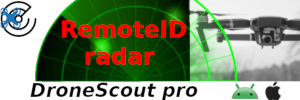Why would a FLIR 320 Boson cost thousands when companies such as seek can sell a 320x240 thermal camera for only $500?
Thermal Cameras for your Smartphone
A Boson 320 commercial grade from the UK distributor (AcalBFI) is about £1100 plus VAT.
Whilst the resolution is the same as the Seek product, the Boson has more advanced lenses and some very impressive image processing capabilities, so the image quality is actually a lot better than a Seek Thermal. Bear in mind that the lens makes up a significant % of the cost of a sensor. I don't know if Seek offer their sensor to third parties, and then DJI would have to come up with a suitable lens for it. That's hassle and money.
A Lepton 3.5 is £202 on Digikey.
The other thing is development. As I've said before, I'm pretty sure that DJI and Flir based the M2ED camera off a Flir One so most of the dev work was already done, it just had to be repackaged and then modified to output whatever format the Mavic wants (probably MIPI CSI). With DJI's R&D team of 2500+ people they could probably knock out a prototype in a couple of days. Then just put together a new PCB, sort the firmware, arrange some new gimbal tooling and job done. I highly doubt the hardware of the actual Mavic is changed, but I could be wrong.
For a Boson, they would have to start from scratch with the image processing and enhancement. It's also a physically bigger unit so they would have to make more mods to the gimbal. The theme here is minimising hardware changes.
You also have more data to deal with from a Boson. Whereas a Lepton outputs 8.7fps at 160x120 over SPI (almost insignificant amount of data that you can process with even a mid range microcontroller), the Boson outputs a minimum of 8 bit parallel pixel data and this is a significant amount of data to deal with, especially with the 60Hz units. Which brings me onto my next point...
A Lepton is low end and is available only in 8.7Hz config (30Hz ones exist unofficially), which means there is far less paperwork to worry about when selling to end users. If they used a Boson, they could stick with the 9Hz one sure, but customers would also want the 60Hz option so that creates more headaches for both DJI and dealers.
For us to sell one of our Boson based units to any UK "military entity" (including Police, Coast Guard etc...), the approval process takes 12 weeks. There is also a small list of other countries that one can sell to, and you need approvals for every order.
And again, a Boson based unit would take sales away from the XT2, which isn't a good business strategy.
DJI have done a great job of making an affordable, capable drone with a thermal camera. Yes, in the grand scheme of things, the thermal image quality sucks, but it's a lot better than nothing, and for the extra £700/$700, they will likely sell a lot more of these than normal M2Es.
It still sucks for SAR and surveillance and that's why we're making our Boson based solution



















